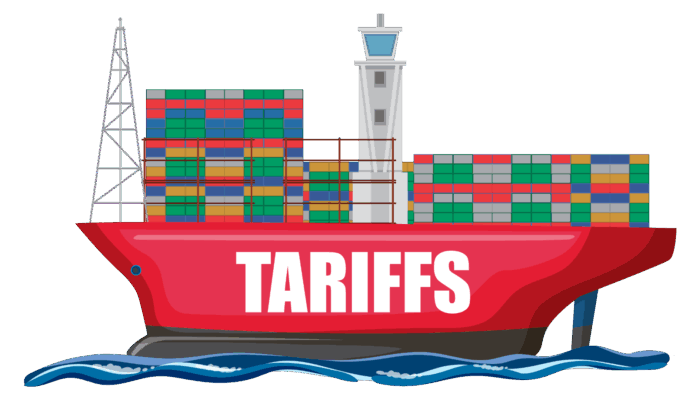The future of retail isn’t coming—it’s here. Of course, new technological advancements occur all the time. But the pace of change should get retailers’ attention. Keeping up with retail technology trends is about more than doing away with the outdated IT systems and old computers of yesteryear. It’s also about identifying trends with staying power.
Fluent Commerce offers solutions to help businesses navigate an ever-changing retail landscape. Read on to explore how technology is changing retail in 2024. Consider the implications for operations and the customer experience.
On the operations side
The retail sector faces new challenges every day. Changing consumer behavior and preferences means companies must stay on their toes or risk losing their competitive advantage. But these obstacles also present an opportunity to innovate.
One of the most effective ways to innovate is by adopting new technologies. Retail technology leverages advancements to modernize the retail experience. In turn, businesses operate more efficiently and meet (or exceed) customer expectations.
Check out these retail technology trends affecting how businesses operate in 2024:
1. API-Based technology for scalability
APIs play a key role in ensuring scalability. They allow direct communication and interaction between different software systems, enabling them to work together efficiently regardless of their underlying architectures. This allows organizations to create custom solutions tailored to their specific needs, fostering innovation and rapid development cycles.
2. Improving management control through automation
Inventory is a significant portion of a retailer’s assets. This makes an effective inventory management strategy essential. Retailers want a solution that optimizes cost and delivers real-time information about stock levels.
Automation drives more intelligent inventory control. Through automation, retail businesses can increase productivity, reduce human error, and boost service quality while saving costs. What’s more, you may not need to invest in new technologies to pursue automation. According to a study from McKinsey Global Institute, retailers can automate 52% of all retail tasks using existing technology.
The following describes the specific ways automation serves retail operations:
Auto-replenishment
Manual replenishment is tedious; automation brings speed and accuracy to this process. It enables retailers to evaluate historical data, sales trends, and other factors to predict demand. It also helps them maintain the correct stock levels.
Order processing
Through automation, retailers can determine the best warehouse to collect goods for fulfillment. This allows for faster deliveries and enhanced customer satisfaction.
Fewer human errors
Human errors are like dominoes in retail. One mistake can have significant consequences. Prevent these issues by automating tasks where errors are more likely, such as data entry and order processing.
3. The importance of omnichannel shopping
Many retail businesses split their efforts between physical stores and e-commerce platforms. Customers have come to expect enhanced omnichannel shopping. This means fusing online shopping with the offline/in-store experience.
Focusing on omnichannel shopping allows your business to achieve the following:
Hyper-personalization with marketing
Technologies like artificial intelligence and machine learning help retailers understand consumer behavior across multiple channels. This allows for personalized recommendations that consider each shopper’s preferences.
Unified inventory management
Advanced technologies ensure inventory availability and visibility across several sales channels. This unifies inventory management. Additionally, it allows retailers to offer in-demand services like buy-online-pick-up-in-store (BOPIS).
Enhanced mobile customer engagement
Mobile devices are crucial to omnichannel shopping. Retailers invest in technologies to enhance the customer experience on mobile apps and websites.
4. Retailers leveraging the power of predictive analytics
Businesses have the data, but high volumes make it difficult to analyze it all. Predictive analytics allows retailers to interpret this data better. It provides more insight into consumer behavior, industry developments, and more. This insight empowers informed predictions.
Inventory management systems
Predictive analytics is another technology enhancing inventory management. Retailers use data to determine which items will sell fast and which will take longer to sell. Then, they can adjust inventory levels to lower costs and avoid understocking.
Optimal price-points
Retailers can also create optimal pricing through predictive analytics. Data like competitor pricing and demand show the best prices for maximizing profit while maintaining a competitive advantage.
Emphasis on sustainability in retail
No longer can brands rely solely on offering the best prices or value to attract customers. Today, more consumers are eco-conscious and prioritize sustainability. In the new year, retailers can leverage technologies to help reduce their environmental footprint. Read more about why flexible order sourcing is essential in today’s world.
Optimized supply chain management
The supply chain is a key focus for sustainability. Blockchain, Internet of Things (IoT), and transportation management systems are just some technologies making the supply chain “green”. They enhance the transparency and visibility of the supply chain. The result is better control of the distribution process, including environmental impact.
Reduced waste
In 2024, prioritizing waste reduction isn’t just a trend—it’s essential. Reducing waste is imperative for retailers as it not only aligns with sustainable practices but also optimizes operational efficiency and fosters a positive brand reputation in an increasingly eco-conscious consumer market.
Incorporating “green” technology
Not all environmental efforts are about merchandise. Incorporate sustainability into daily operations. For example, the following technologies can lower the environmental impact of brick-and-mortar stores:
- Energy-efficient heating and cooling
- Smart lighting
- Waste management systems
On the customer-experience side
AI isn’t just enhancing the customer experience. It’s transforming the industry. According to a study from McKinsey Global Institute, the potential global annual value of AI in the retail space is between $400 and $800 billion.
Although the level of investment in AI is growing, this isn’t a new trend. For instance, the fashion industry has used this technology for several years. As of 2018, more than 75% of fashion retailers planned to invest in AI in the next year. The same percentage planned to increase investment in AI and machine learning by 2021.
In other words, if your business isn’t using AI yet, you’re already behind. But not to worry — here are three technologies to consider in 2024 to boost the customer experience.
In-store experiences like never before
After the COVID-19 pandemic, it seemed physical stores would go by the wayside. However, many consumers prefer to shop in-store for items. This means retailers can’t focus solely on enhancing the customer experience on e-commerce platforms.
A leading technology impacting the in-store experience is self-service checkouts. This technology is beneficial for businesses and consumers. They can speed up the checkout process and allow retailers to save on labor costs.
What’s more, this technology is becoming more affordable. So, retailers can expect more businesses to implement them in the next year. With self-service checkouts extending beyond supermarkets and department stores, retailers may wish to implement them to stay competitive.
Other technologies allow customers to have an in-store experience without leaving home. Advancements in virtual reality, like the metaverse, provide virtual try-ons and similar features that stimulate in-store shopping.
Chatbots are integral to e-commerce platforms, but retailers can consider virtual assistants in-store as well. Shopping assistant kiosks can help customers locate an item and provide personalized product recommendations.
Augmented realities to immerse customers
E-commerce retailers aren’t only competing with other e-commerce platforms. They also must consider social media sites like Instagram and TikTok with shopping functions. One strategy to stand out is creating an immersive experience. This is possible with augmented reality.
One of the main reasons customers look elsewhere is a lack of certainty about a product. The customer wants more information before they can confidently purchase. Augmented reality offers more visual information than standard, 2D images. For instance, customers can spin items around to see how they look from every angle.
The following are some examples of retailers using augmented reality:
- Amazon: When shopping in the app for furniture and decor, customers can visualize how items look in their homes. The technology projects a product model onto an image of the room.
- Apple: Apple continues to update devices to offer businesses new augmented reality tools. Use Apple products to enhance merchandising, design, training, and more.
- Sephora: The Virtual Artist tool allows customers to try on different lipsticks, eyeshadows, and other makeup products. This helps them determine which colors complement their skin or achieve a certain look.
- Zenni: This eyewear brand allows shoppers to try on glasses virtually. The tool also analyzes a customer’s face shape to find the most flattering frames.
Social commerce
There’s no denying the impact that social media can have on ecommerce. It streamlines the shopping journey by allowing customers to purchase on the same platform they encounter advertising. On the business side, social commerce provides direct access to the target audience. They also offer opportunities for product recommendations.
Social commerce has become more relevant when attracting younger consumers. Research from Insider Intelligence finds that more than two-thirds of social buyers are under 44, with about one-quarter being between 25 and 34. If brands want to increase engagement with these audiences, they must consider social commerce.
Why invest in retail tech?
Technology advances at a rapid pace. Businesses want to understand retail technology trends in 2024 to ensure they stay relevant and competitive. If it’s time for innovation at your business, an order management system is a great place to start.
Fluent Commerce offers a distributed order management system that drives growth. The solution helps businesses across industries, from retailers to luxury brands. Use it to provide a unified customer experience across sales channels, optimize fulfillment, and more. To learn more about Fluent order management, contact us today and request a demo.



